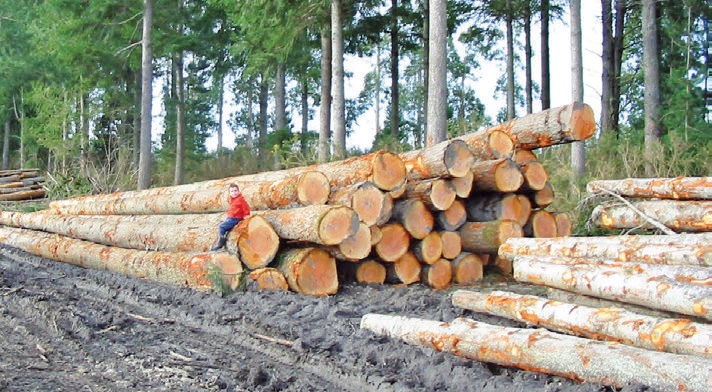
This is free.
Douglas fir and Swiss needle cast
Patrick Milne, New Zealand Tree Grower May 2015.
Douglas fir, with upwards of 110,000 hectares planted, is New Zealand’s second most commonly planted forest tree. Often referred to as Oregon pine, it is now mostly planted on higher altitude cooler sites where as a general rule it grows very well.The well proven properties of Douglas fir make it a highly regarded species. Its timber has a good reputation for structural use and it is widely accepted in both local and export markets where it commands a premium over radiata.
While Douglas fir is relatively easy and trouble free to grow, it is affected by a foliage disease commonly known as Swiss needle cast caused by the fungus Phaeocryptopus gaeumannii. This disease was first discovered in the central North Island in 1959 and has since spread to most parts of the country. Swiss needle cast causes premature needle loss resulting in sparse tree crowns and reduced tree growth, but it rarely causes tree death. The effect of Swiss needle cast varies markedly from north to south – on warmer sites it has resulted in up to a 50 per cent loss in volume while on cooler sites the effect has been minor, if any. Overall, it is estimated that Swiss needle cast has reduced volume growth by 25 per cent across the Douglas fir estate.
Reviewing experience
The Diverse Forests programme, funded by the Forest Growers Levy Trust, recently held a one day workshop in Christchurch to review New Zealand’s experience with Swiss needle cast. The workshop ‘Swiss needle cast − What do we know and what can we do’ brought together 20 growers and researchers to share experience and ask the question ‘what else could we be doing to minimise the effect of Swiss needle cast on our forests’. The workshop programme started with Ian Hood from Scion discussing the pathology and development of the disease in New Zealand. Mike Watt then outlined predictions under different climate change scenarios. Professor Doug Maguire from Oregon State University summarised the American experience with the disease and how they were managing their forests and living with Swiss needle cast.This in turn was followed by industry perspectives from Ernslaw One and City Forests and genetic solutions from Scion researchers. For the last hour or so of the workshop, participants split into two groups to brainstorm and prioritise future research ideas, the results of which will form the basis for future work on the disease.


Possible solutions
In summary it was thought that genetic solutions offered the best opportunity for long term mitigation of the effects of the disease. In the short term, thinning and good stand management were the practical actions forest managers could undertake to reduce the effect of the disease.All the presentations along with a synopsis of the day’s proceedings will be available on the website www. ffr.co.nz.
The take-home message from the workshop was that the effect of Swiss needle cast on Douglas fir is quite manageable and that the disease should not be a reason to not plant it. The North American experience is that you live with it and adapt accordingly. Overall, the participants thought the workshop a timely and worthwhile contribution to growing and managing Douglas fir in New Zealand.
Patrick Milne is a member of the Forest Research Committee monitoring levy funded research.

 Farm Forestry New Zealand
Farm Forestry New Zealand